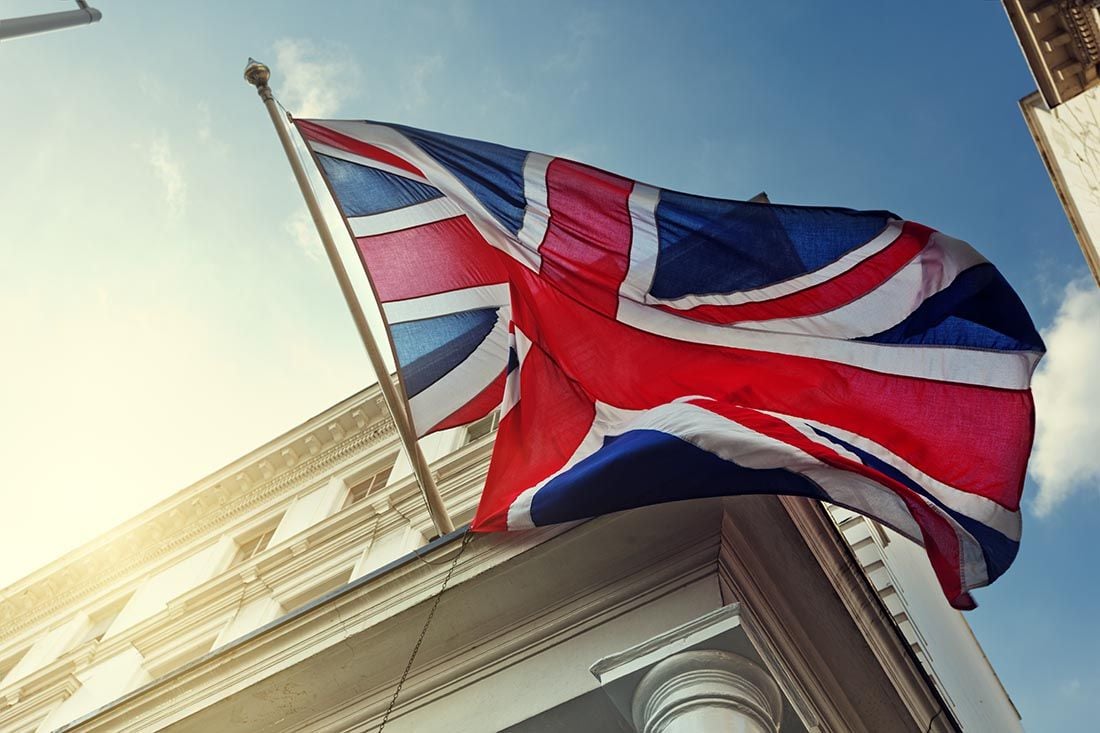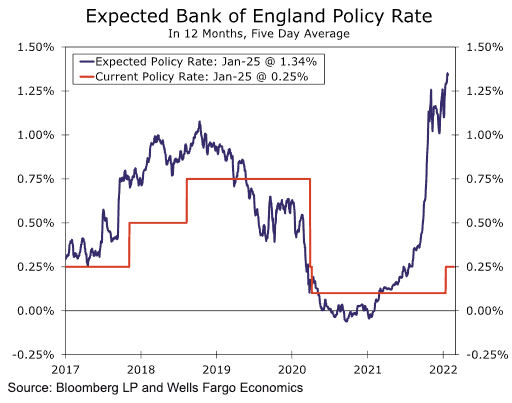Pound / Euro Back Above 1.20 but Caution to Build Ahead of BoE Decision
- Written by: Gary Howes

Image © Adobe Images
The Pound to Euro exchange rate has rallied back above the 1.20 mark amidst improving sentiment on global markets and in anticipation of a February 03 interest rate hike at the Bank of England, however analysts warn of a cautious tone from the central bank next week.
The Pound had suffered deep losses against the Euro and Dollar at the start of the week amidst a sizeable selloff in global equity markets - testament to its high beta status - but come Friday volatility has eased and investors are rediscovering their composure.
Market volatility has centred around the U.S. Federal Reserve which now looks all but set to hike interest rates in March and maybe a further four times in 2022, signalling an end to a recent era of 'easy money'.
The promise of higher returns on U.S. monetary assets owing to higher rates aided the Dollar against the Euro, Dollar and other currencies, but the Pound can rely on its own central bank to also deliver higher interest rates over coming months.
- Reference rates at publication:
GBP to EUR: 1.2024 - High street bank rates (indicative): 1.1700 - 1.1787
- Payment specialist rates (indicative: 1.1916 - 1.1964
- Find out more about specialist rates and service, here
- Set up an exchange rate alert, here
Sterling has been bid since a December rate hike at the Bank of England and in anticipation of a 25 basis point hike being delivered on February 03, while a further three hikes for 2022 are anticipated by markets.
The Pound-Euro rate has rallied to two-year highs as a result but has struggled to make headway beyond 1.20, causing analysts to interrogate what the potential catalysts to further gains - or a capitulation - might be.
At the very least analysts say equity market sentiment must remain constructive and offer Sterling support.
But with market volatility being elevated an extension of the benign market backdrop cannot be guaranteed.
"The Fed’s more hawkish outlook could be a tougher pill for markets to swallow, keeping volatility elevated, and boosting the dollar’s safe haven standing," says Joe Manimbo, Senior Market Analyst at Western Union Business Solutions.
The Bank of England meeting must also come in on the hawkish side: at the very least it must meet market expectations and raise rates by 25 basis points next Thursday while confirming the need for further hikes and issuing optimistic economic forecasts in the Monetary Policy Report.
Currency analysts warn this is where Sterling bulls might be disappointed, with some saying the Bank's tone regarding the outlook could disappoint.
"The BoE will strike a cautious tone at its February policy meeting, even as it delivers another 25bp hike to address the mounting cost-push inflation," says Valentin Marinov, Head of G10 FX Strategy at Crédit Agricole. "We remain cautious on the GBP in the near term".
{wbamp-hide start}
{wbamp-hide end}{wbamp-show start}{wbamp-show end}
"The extent of sterling’s appreciation since Q4 2021, and particularly since mid-December, makes us cautious about further near-term gains," says Audrey Ong, a strategist at Barclays. "Sterling may reverse some of its gains against the EUR given elevated expectations for Bank of England tightening and the UK-EU growth differential shifting in favour of the common currency."
Nick Bennenbroek, Economist at Wells Fargo, says the Bank will in fact forgo a rate hike.
"We expect the Bank of England to hold its policy rate steady at 0.25% at its early February monetary policy announcement," says Bennenbroek.
Such an outcome would massively disappoint consensus and trigger an unravelling of recent gains.
Bennenbroek says elevated inflation "will clearly warrant further Bank of England tightening in our view," but subdued economic growth will hold the Bank back from achieving what investors have priced into rates markets and the Pound.
UK CPI inflation reached 5.4% year-on-year in December and Wells Fargo see inflation rising to 7.0% before beginning to recede.
"Even if a significant portion of the spike of U.K. inflation is energy-driven, overall price increases of that magnitude will clearly warrant and necessitate further policy rate increases from the Bank of England, with the main question being the timing and speed of those central bank rate hikes," says Bennenbroek.
Wells Fargo's economists see UK growth experiencing temporary softness around the turn of the year related to a surge in Covid cases, while headwinds from reduced consumer purchasing power will weigh later in 2022.
They forecast GDP growth of 4.1% for 2022, down from an estimated 7.1% in 2021 and believe the risks around that growth outlook remain tilted to the downside.
Image courtesy of Wells Fargo.
Wells Fargo forecast only two 25 basis point rate increases this year, at the May and November announcements, and two more 25 bps rate increases in 2023.
This would massively disappoint market expectations which anticipate a terminal Bank Rate as high as 1.25% in the first quarter next year.
Wells Fargo duly see Pound Sterling to "come under pressure over time".
"The 50 bps of policy rate increase we forecast from the Bank of England over the next 12 months compares to market expectations for 113 bps of policy rate increase over that period," says Bennenbroek.
Wells Fargo forecast the GBP/USD exchange rate falling towards 1.2900 by the end of 2022 and to 1.2700 by the middle of 2023.
If the Euro-Dollar were to rise, or fall at a marginally slower rate, the Pound-Euro exchange rate would duly come under pressure.






